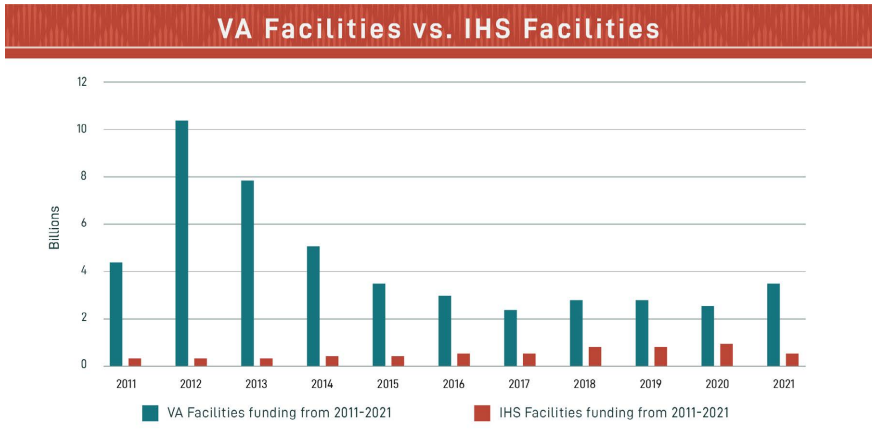Resource: Comparison of the Veteran Health Administration and IHS Facilities Funding Document Released on NCUIH Website
The National Council of Urban Indian Health (NCUIH) recently released a one-pager entitled “A Comparison of The U.S.’ Two Federal Health Systems: America’s Investment in Facilities of The Veterans Health Administration and The Indian Health Service” on the NCUIH website. This document shows the historical underfunding of the Indian Health Service (IHS) regarding facilities funding.


The average age of IHS health care facilities is greater than 37 years and the IHS facilities maintenance backlog is approximately $515 million. Since Fiscal Year 2011, IHS has received only $6.7 billion in facilities funding to provide safe health facilities to the approximately 9.7 million American Indians/Alaska Natives (AI/ANs) in the United States, while the Veteran Health Administration (VHA) has received $48.5 billion in facilities funding to provide care for their approximately 9 million user population.
Despite the trust and treaty obligation of the federal government to provide health care to AI/ANs, IHS has been historically underfunded in comparison to other major federal health agencies in more ways than facilities funding. In 2018 the Government Accountability Office (GAO-19-74R) reported that from 2013 to 2017, IHS annual spending increased by roughly 18% overall, and roughly 12% per capita. In comparison, annual spending at the Veterans Health Administration (VHA), which has a similar charge to IHS, increased by 32% overall, with a 25% per capita increase during the same period. Similarly, spending under Medicare and Medicaid increased by 22% and 31% respectively.
UIOs Lack Access to the Under-Funded IHS Facilities Account
UIOs report needing at least $200 million to fund construction and renovation projects, however, they lack access to facilities funding under the general IHS budgetary scheme, meaning there is no specifically allocated funding for UIO facilities, maintenance, sanitation, or medical equipment, among other imperative facility needs. UIOs are forced to use dollars from the already underfunded line item for this purpose. Increased funding to both the urban Indian health line item and IHS facilities account is critical to provide adequate and safe care to the over 9.7 million American Indians/Alaska Natives across the country.




